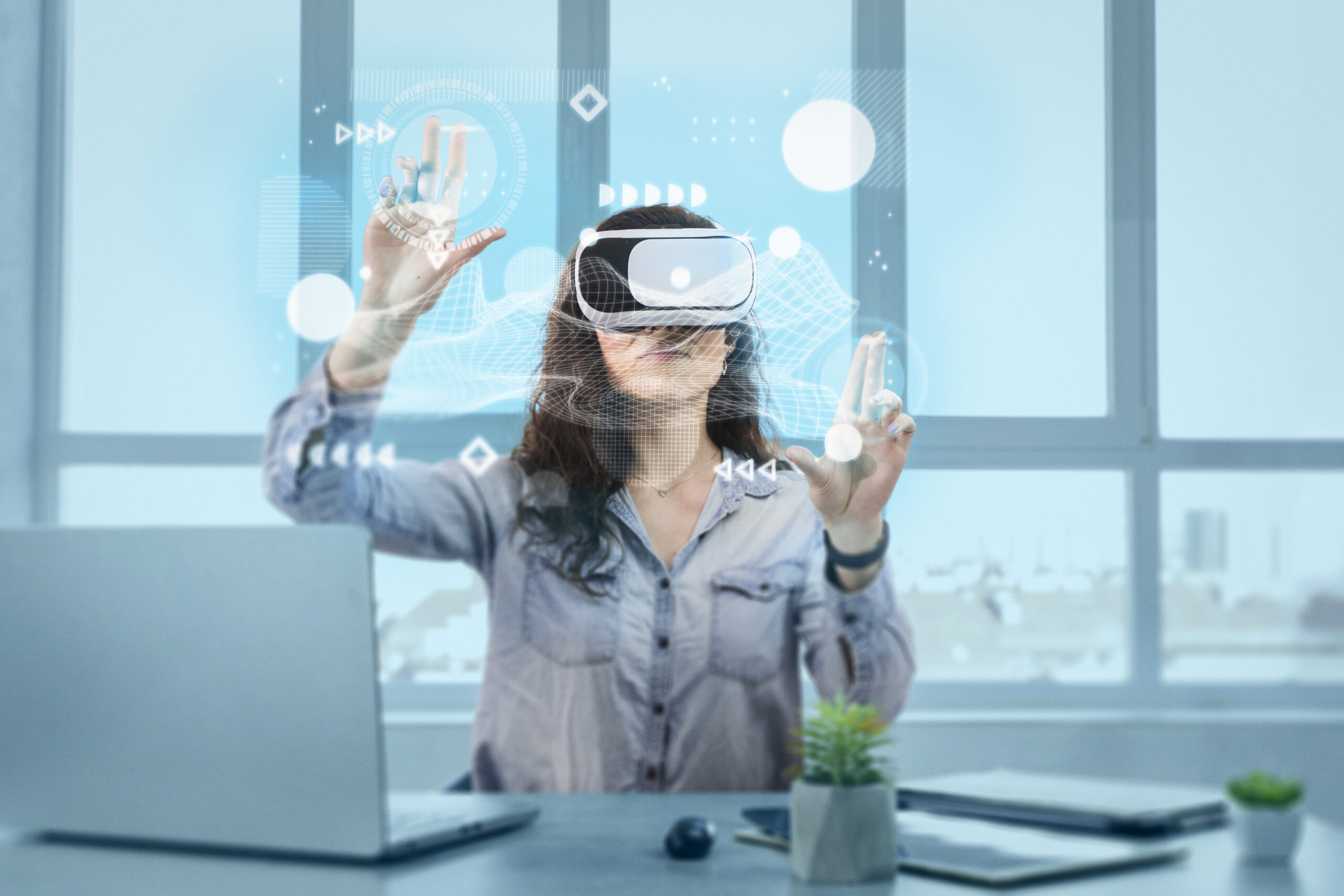
Two technologies that are transforming how we use screens are augmented reality (AR) and virtual reality (VR), which offer fresh and fascinating interactive experiences. Unlike virtual reality (VR), which replaces the real environment with a fictional one and is primarily meant to improve games, augmented reality (AR) aims to improve both the virtual and physical worlds. You can explore a computer-generated environment with virtual reality (VR) by donning a headset. Conversely, AR is a little bit different. With the use of a smartphone or clear vision, it overlays digital images on the surrounding real environment.
The ability to reflect digital elements in the physical world is what sets augmented reality apart.
While the gaming business is already actively embracing VR, augmented reality is mostly used in the industrial and enterprise sectors for digitization and on-site developments.
AR and VR are being used in a wide range of industries, including healthcare, manufacturing and logistics, education and training, real estate, and construction. The applications of virtual reality and augmented reality are constantly growing, ranging from gaming to movies to medical.
APPLICATIONS OF AR AND VR TECHNOLOGY INCLUDES:-
Gaming- Imagine a game taking you to a world of fantasies and offering a real time experience like you are present in the scenario. How entertaining would it be to play these games and explore a different yet captivating world? In today’s time, it’s no longer an imagination but a reality- Augmented and virtual reality. It allows us to create and improve the fictional reality for the gaming world.
Training- In sports, digital training devices help athletes to analyze their techniques or allow the commentators to offer more in-depth analysis of game plays. AR/VR has also transformed fan interaction and engagement in the sports. Fans can interact with the game in real time, creating a more engaging and immersive experience.
Education- As schools are adopting these techniques they are building portal using which students need not to be physically present in an institution or school to be a part of the educational curriculum. This removes the barrier of location and physical presence to be able to be educated. This removes the time barrier as well if there are pre-recorded ventures. Students can re-watch such pre-recorded virtual graphics as many times as they want.
Medicine- It can be used for post-traumatic stress or anxiety. AR can help doctors visualize medical data like nerve pathways, blood flow, aiding in diagnosing and treating conditions. Neurosurgeon uses the AR scan of a brain to guide them through surgery.
NIKE uses AR and VR in their physical stores, Customers can scan items like shoes or clothing to view information. IKEA- allows customer to superimpose furniture into their homes to decide if they like how it looks. In the automotive industry, both BMW and Jaguar have been using VR for years to check the visual design- all before any money has been spent on physically manufacturing the parts.
Both AR and VR technologies are growing at a rapid pace.
Allow your creativity to flow and your willingness to try new things to improve your experience!
